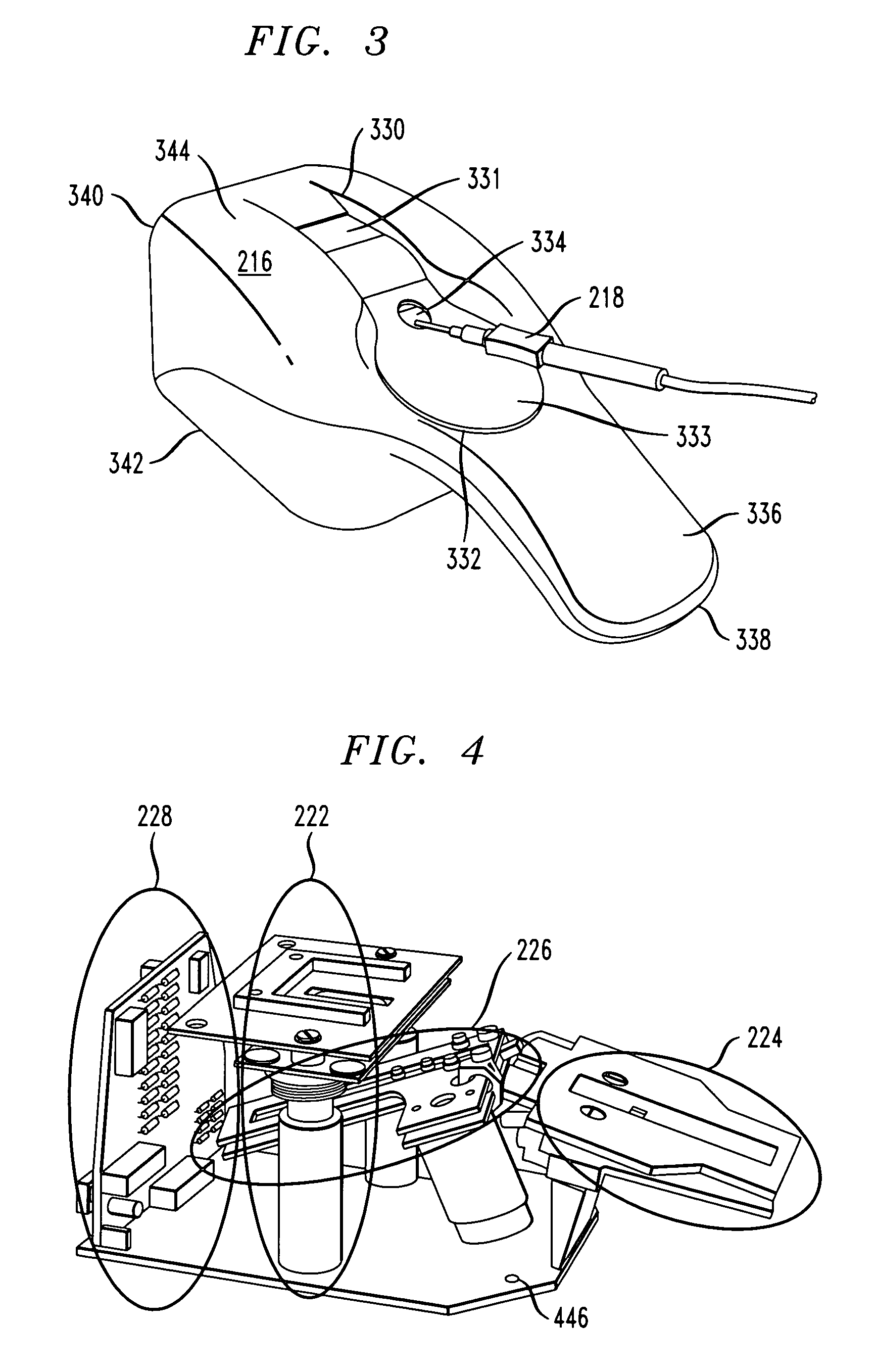Vascular-access simulation system with ergonomic features
a technology of ergonomic features and simulation systems, applied in the field of systems, can solve the problems of not providing a particularly realistic simulation, unable to promote a user's “suspension of disbelief", and user hands in awkward and unrealistic positions
- Summary
- Abstract
- Description
- Claims
- Application Information
AI Technical Summary
Benefits of technology
Problems solved by technology
Method used
Image
Examples
Embodiment Construction
[0030]The terms and phrases listed below are defined for use in this specification as follows:
[0031]“End Effector” means a device, tool or instrument for performing a task. The structure of an end effector depends on the intended task. For example, in the illustrative embodiment, the end effector is intended to be used to simulate a vascular access procedure, and is therefore implemented as a catheter-needle module. Those skilled in the art will recognize that term “end effector” is borrowed from robotics, where it has a somewhat different definition: a device or tool connected to the end of a robot arm.
[0032]“Imitation” means an artificial likeness that is intended to be substantially similar to an item being imitated; a copy. For example, “imitation skin,” which is used in conjunction with the illustrative embodiment of the present invention, is intended to mimic or copy genuine skin via appropriate selection of color, appearance, feel, and overall presentation.
[0033]“Mock” means ...
PUM
 Login to View More
Login to View More Abstract
Description
Claims
Application Information
 Login to View More
Login to View More - R&D
- Intellectual Property
- Life Sciences
- Materials
- Tech Scout
- Unparalleled Data Quality
- Higher Quality Content
- 60% Fewer Hallucinations
Browse by: Latest US Patents, China's latest patents, Technical Efficacy Thesaurus, Application Domain, Technology Topic, Popular Technical Reports.
© 2025 PatSnap. All rights reserved.Legal|Privacy policy|Modern Slavery Act Transparency Statement|Sitemap|About US| Contact US: help@patsnap.com



